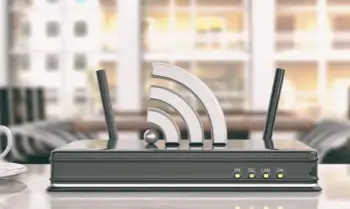AT&T Router Login and Password
When you purchase a new router, it’s a good idea to change the default configuration - including the login credentials and SSID - before using it to connect to the Internet. This will provide better security for your network, protecting it against hackers, malware, and other external threats. In this article, learn how to login to your AT&T router, how to change the default username and password, and how to troubleshoot a few common issues that you may encounter.
How to log into an AT&T router
The AT&T router - sometimes referred to as the ATT router online for simplicity - is a fairly common router, as AT&T is a popular Internet provider. They provide WiFi networks, cellular connections, and even new ATT Passpoint WiFi connections. Therefore, if you're one of the people with this router and want to learn how to log into your AT&T WiFi settings, follow these steps.
- Connect the router to a modem. Plug an Ethernet cable into the Internet port on your router and plug the other end of the cable into the Ethernet port on your modem.
- Power your router on. Locate the power button on the device to activate it.
- Enter the AT&T router IP address into your web browser's address bar. Open your web browser. The default router IP for AT&T is usually either 192.168.1.254 or 192.168.0.1.
If none of these work, you may need to check your router's IP on your computer or on the router login chart. Once you've entered the default ATT router login IP, you'll gain access to the AT&T router login page. After you enter the username and password, you can update your information in the account, change your router settings, check your network speed and download speeds, and more.

How to secure your AT&T router
After logging in, follow these steps to secure your AT&T account and router.
- Change the default login information. Find your WiFi network name and click Edit. Scroll to where you see Change Password or something similar. Here, you can change your WiFi network password from the default password; enter a new password and save your settings.
- Change your network name (SSID). Your network name, or SSID, can be changed in the same place as your password. Pick a network name that's recognizable but doesn't give away personal information. Save the name once you've entered it.
- Update your router. If there's any new security features or updates available, make sure to update your router in the network settings to protect it against external threats.
These three steps will optimize your router's security and performance and make it easier to find among other available networks.
What is the AT&T router default login?
If you haven't yet changed your AT&T router's default username or password, you can first log in using the default data. The AT&T default router login is attadmin for the password. Leave the username field blank when logging in initially.
Keep in mind that the password is case sensitive, so avoid any accidental capitalizations or spaces. Check the full default router login chart for admin passwords and usernames to other WiFi routers, such as Asus, Frontier, and Netgear.
If you changed your ATT router default password but forgot it, you can reset your AT&T router with a factory reset. This will reboot the system and reset the router username and password with the default login, listed above. To reset the router, find the reset button on the back of the router. The button is typically small; press and hold the button for a few moments until your router's lights blink.
However, be aware that factory resetting your AT&T router clears any custom configurations that the user has previously set up. If you set up port forwarding on your device, for example, you will need to reestablish those router settings after successfully logging in to the ATT router.
Troubleshooting router connections
Some routers have trouble connecting, making you unable to access the router login page. Therefore, if this is the case, you may need to clear your AT&T router's cache in a web browser.
Google Chrome
To clear your cache in Google Chrome, follow these steps:
- Go to the browser toolbar in Chrome and click More Tools.
- Select Clear Browsing Data.
- Choose the Beginning of Time option, and click Clear Browsing Data again to send the request through.
Safari
To clear your cache in Safari, follow these steps:
- Go to the home screen and then to your settings.
- Select Safari and choose Clear Cookies (or Clear Cookies and Clear Cache) from the bottom of Safari's settings screen.
- Confirm when prompted.
Firefox
To clear your cache in Firefox, follow these steps:
- Go to the Menu bar at the top of the screen.
- Click Settings, then Privacy & Security.
- In the Cookies and Site Data section, click Clear Data.
- Uncheck Cookies and Site Data and check off Cached Web Content, then click Clear.